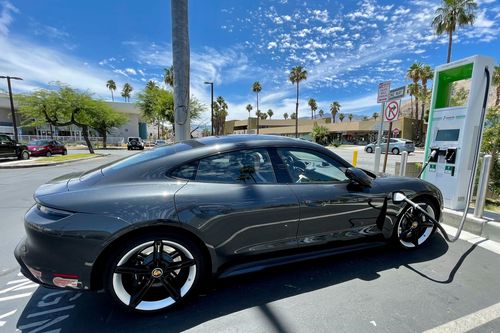PEV
Briefing

A plug-in electric vehicle (PEV), also known as new energy vehicle (NEV) in China, is any road vehicle that can utilize an external source of electricity (such as a wall socket that connects to the power grid) to store electrical power within its onboard rechargeable battery packs, which then powers the electric motor and contributes to propelling the wheels. PEV is a subset of electric vehicles and includes all-electric/battery electric vehicles (BEVs) and plug-in hybrid vehicles (PHEVs). Sales of the first series production plug-in cars began in December 2008 with the introduction of the plug-in hybrid BYD F3DM, and then with the all-electric Mitsubishi i-MiEV in July 2009, but global retail sales only gained traction after the introduction of the mass production all-electric Nissan Leaf and the plug-in hybrid Chevrolet Volt in December 2010.

Plug-in electric cars have several benefits compared to conventional internal combustion engine vehicles. All-electric vehicles have lower operating and maintenance costs, and produce little or no local air pollution, thus (depending on the electricity source) reducing societal dependence on fossil fuels and significantly decreasing greenhouse gas emissions but take time to recharge and are heavily reliant on sufficient charging infrastructures to remain operationally practical. Plug-in hybrids provide most of electric cars' benefits when they are operating in all-electric mode, though typically having shorter all-electric ranges, but have the auxiliary option of driving as a conventional hybrid vehicle when the battery is low, using its internal combustion engine (usually a gasoline engine) to alleviate the range anxiety that accompanies current electric cars.
Cumulative global sales of highway legal plug-in electric passenger cars and light utility vehicles achieved the 1 million unit mark in September 2015, 5 million in December 2018 and the 10 million unit milestone in 2020. Despite the rapid growth experienced, however, the stock of plug-in electric cars represented just 1% of all passenger vehicles on the world's roads by the end of 2020, of which pure electrics constituted two thirds.

As of June 2021, the Tesla Model 3 ranked as the world's top selling highway-capable plug-in electric car in history, and also was the first electric car to achieve global sales of more than 1,000,000 units, The Mitsubishi Outlander P-HEV is the world's all-time best selling plug-in hybrid, with global sales of around 300,000 units through January 2022.
As of December 2021, China had the world's largest stock of highway legal plug-in electric passenger cars with 7.84 million units, representing 46% of the world's stock of plug-in cars. Europe ranked next with about 5.6 million light-duty plug-in cars and vans at the end of 2021, accounting for around 32% of the global stock. The U.S. cumulative sales totaled about 2.32 million plug-in cars through December 2021. As of July 2021, Germany is the leading European country with cumulative sales of 1 million plug-in vehicles on the road, and has led the continent plug-in sales since 2019. Norway has the highest market penetration per capita in the world, and also achieved in 2021 the world's largest annual plug-in market share ever registered, 86.2% of new car sales.
Thanks to our state-of-the-art material and cable manufacturing technology, Metallurgica Bresciana is able to supply high performance special cables, accessories and cable assemblies for motor, battery and electric control systems in a PEV vehicle.





